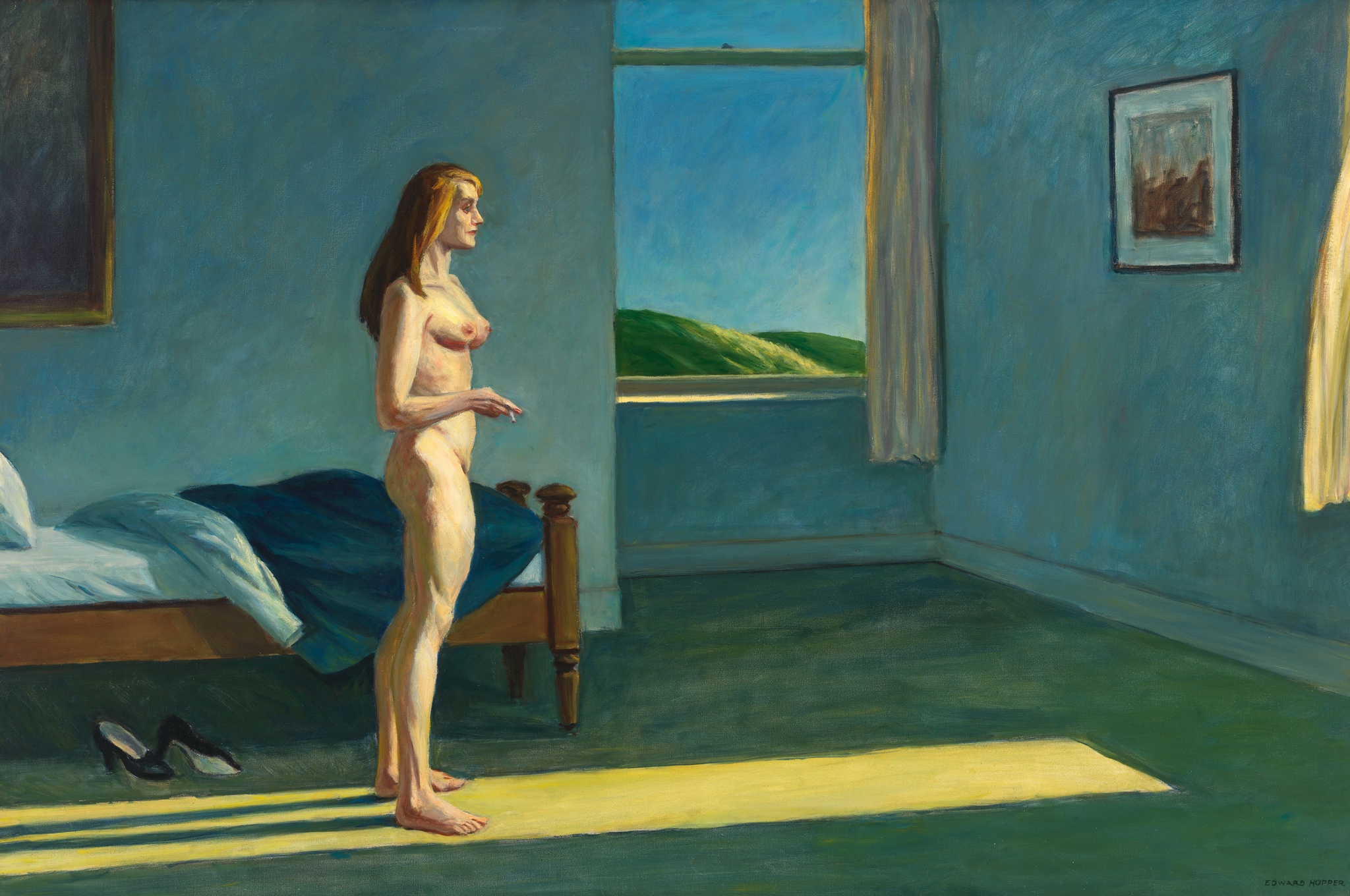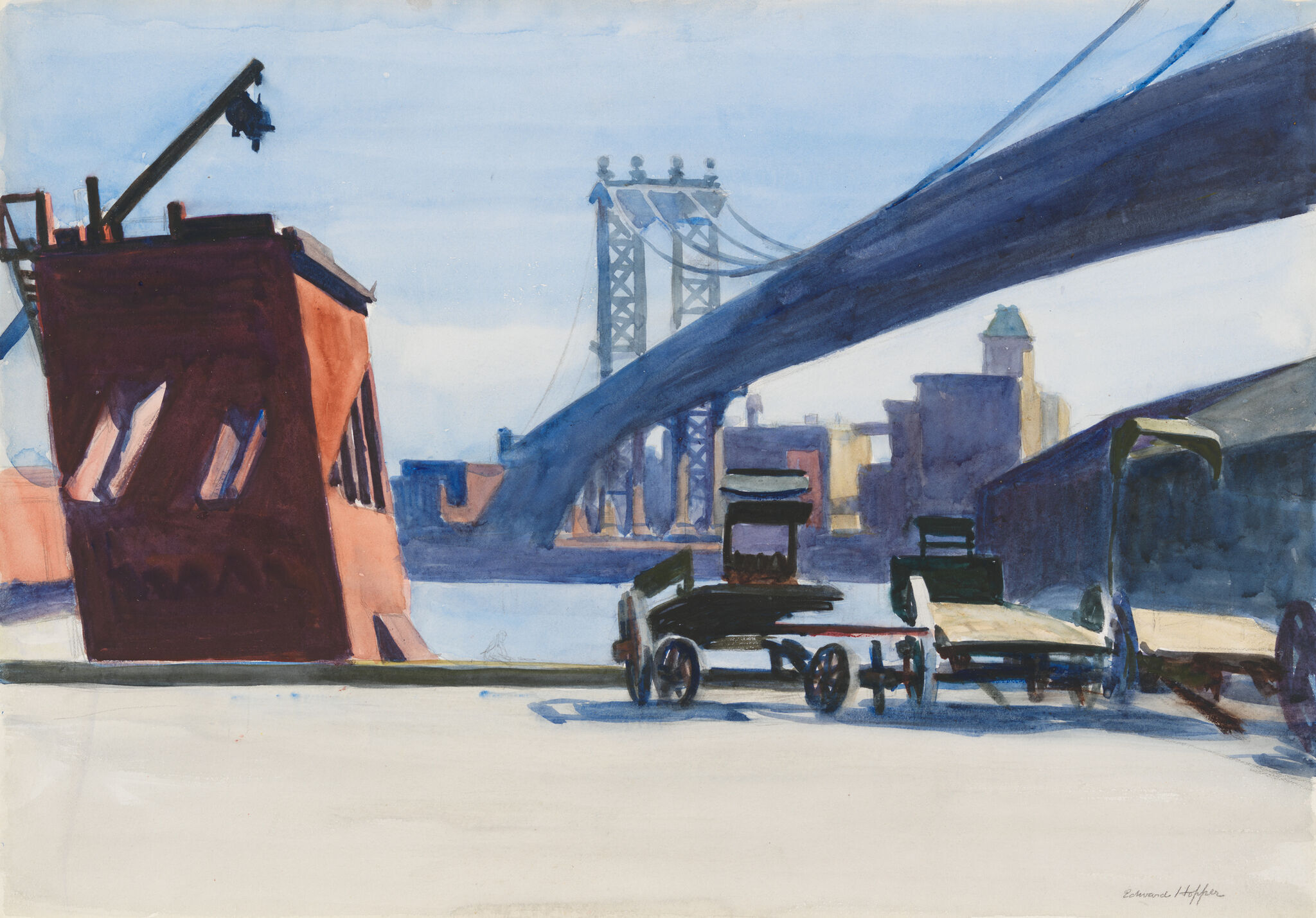Verbal Description: Introduction
Oct 2, 2022
0:00
Verbal Description: Introduction
0:00
Narrator: On the fifth floor, as you exit the elevators you will be in an exhibition titled, Hopper’s New York. The exhibition has dim lighting and white walls throughout. 20 feet ahead of you is a wall that contains a salon hang of several works on paper and paintings. The wall to the left contains an introduction text and to its right is a 30 foot wide space between two of what the Museum is calling pavilions. These pavilions throughout this exhibition are smaller rooms situated inside of the exhibition space of about 30 feet by 30-40 feet with lower light and two doors to enter and exit. Floating overhead in this hallway is a large projection of the city during Hopper’s time from the elevated frame of a train platform. Straight ahead is a section titled The Window with a series of paintings and the view of the cityscape through a sliver of an open window in the Museum. Moving to your right there is a space dedicated to Edward Hopper’s time spent between New York and Paris. Now, to your right again is the first pavilion titled The City in Print with prints from his early career when he was trying to make a living. Exiting through that pavilion into the main space, you can continue onto the next section titled The Horizontal City with horizontally-oriented paintings of the city. From there, you encounter the second pavilion titled Washington Square.
Each of these pavilions contains vitrines in the center of the room displaying Hopper’s ephemera. As you exit the Washington Square pavilion, you then launch into a section titled Reality and Fantasy. Moving straight forward in about 30 feet there are three full height walls lined up in a plane with vertical gaps between them, each holding a different painting by Edward Hopper. Accessible from the right and left edges and moving around this wall, there is a respite space with sofa seating in front of a full wall window overlooking the cityscape of the Whitney Museum. Returning again through Reality and Fantasy, you will encounter the Theater pavilion, which is the last pavilion in the main space. The Theater focuses on Hopper’s paintings of cinema interiors with a slide show, a vitrine with ticket stubs and seating. Exiting the Theater to the right is a short hallway with works on paper that leads into the last pavilion in the Kauffman Gallery. The Kauffman gallery sits apart from the rest of the fifth floor galleries on your way out to the terrace, titled, Sketching New York with Hopper’s drawings of the city. This space contains sofa seating, dim light, a projection overhead and works on paper hanging around the space. To exit the Kauffman Gallery, we move back through the hallway. To the right, straight down is another exhibition titled In the Balance: Between Painting and Sculpture, 1965–1985 as well as elevators to the right along the way.


